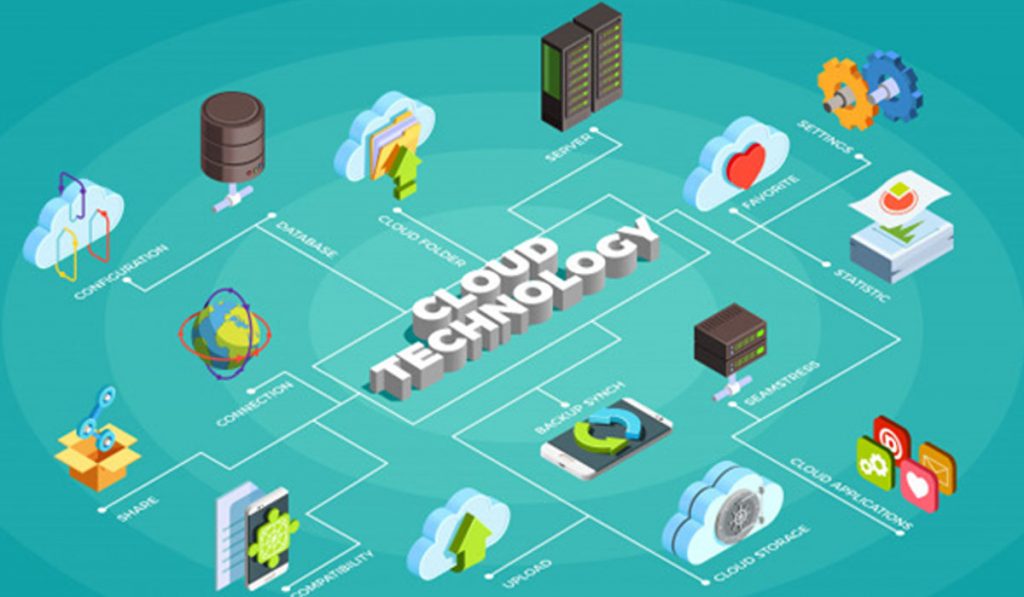Cloud computing has secured the ‘New Normal’ position in the IT industry. It is growing rapidly and is becoming the largest-spend segment for most of the IT companies. This is evident from the fact that about one-third of the IT budget of most companies goes to cloud services. Cloud computing is being integrated into various business operations ranging from application development to managing tech infrastructure, and managing remote work.

As cloud computing technology continues to grow and transform business technology, it will gain dominance in the market with huge investments. The global public cloud computing market is expected to reach beyond $330 billion in 2020 and $623.3 billion by 2023. Cloud computing and cloud storage have amassed interest and exposure across the globe. Owing to the benefits of cloud computing, an increasing number of IT companies are adopting the technology in their everyday business activities.
What is Cloud Computing?
Cloud computing is the delivery of a network of remote servers through the internet to store, process, and manage data instead of using a local server or a personal computer. The cloud offers operating systems, databases, web servers, application software, virtual local area networks, and IP addresses. It provides the benefits of scalability, robustness, and cost-effectiveness in custom application development and application deployment.
Cloud computing is redefining the way organizations build applications and manage operations. In fact, blockchain application development companies are also offering blockchain-based cloud solutions to combine the benefits of cloud computing and blockchain technology. Let’s take a look at the latest trends in global cloud computing technology that may break its own growth records in the following years.
Interesting facts on Cloud Computing
Here are some intriguing facts on Cloud Computing that reveal its growing significance and adoption in organizations across the globe.
- Amazon Web Services has a 32% share in the cloud computing market making it the leading cloud vendor.
- About 90% of companies are already on the cloud.
- The major public cloud market is in the US with a spending of $124.6 billion in 2019.
- In 2021, cloud data centers will process as much as 94% of workloads.
- By 2023, the global cloud computing market is predicted to reach $623.3 billion.
Global Cloud Computing technology trends to watch out for

Rise of Hybrid Cloud in a Multi-Cloud World
Organizations currently use the multi-cloud deployment model. However, the Hybrid cloud model is gaining more importance as the multi-cloud providers provide more flexibility. Hybrid cloud deployment offers economies of scale along with high security to sensitive business information.
As per Gartner, about 75% of companies are predicted to have deployed a multi-cloud or a hybrid cloud model by 2020. Moreover, factors such as scalability, cost-efficiency, security, and agility will drive the demand for hybrid cloud. As a result, the market for hybrid cloud will grow at a CAGR of 17% to reach $97.6 billion by 2023.
Data Center will increase the use of AI
In 2020, the use of AI in the data center will increase significantly. AI will be used to solve various problems such as patterns of network hardware failures, server failures, energy consumption, skill shortage, etc, even before they occur. By using AI, data centers learn from past data to distribute the workloads more efficiently across peak periods. As per a prediction by the research firm Gartner, by 2020, 75% of companies will witness business disruptions due to gaps in operations skills and infrastructure. This increase is 55% more than that in the year 2016.
AI is known for automating various repetitive, rule-based, and labor-intensive tasks and relieving human beings from performing such mundane tasks. Therefore, adoption and integration of AI with business operations is extremely important for the survival and growth of an organization. Another report predicts that by 2020, 30% of data centers that have not prepared for the adoption of AI will not be economically or operationally viable.
Edge Computing is gaining importance
As per a study by Gartner, the use of connected things will reach $25 billion by 2021. Another prediction by Cisco states that by 2022, the number of devices connected to IP networks will exceed the global population by three times. Moreover, the internet experiences a connection with about 127 new IoT devices every second. These statistics reveal that data will be produced in large volumes and will impact the building of data centers. With this trend, companies will build smaller data centers at the edge and closer to the place where data is generated, giving rise to edge computing.
By 2025, 75% of data generated by an enterprise will be created and stored in an edge location. Further, 40% of companies will increase their spending on information technology assets in edge and nearby locations by 100%. This will help them in delivering better digital services to local users.
Quantum Computing
Quantum computing makes it possible to witness improvements and advancements in the performance of computers year after year. However, with further innovations and technological advancements, there will be an increased need to enhance computational capacity and effectiveness to cater to future needs.
Therefore, the future demands the use of quantum computing to empower servers and computers for much faster data processing as compared to the current pace. Quantum computing is becoming vital as cloud computing relies on a fast-paced network system and is critical for computing performance and force expansion.
Increased Transition to Hyperconverged Infrastructure
Hyperconvergence is an IT framework that efficiently reduces the complexity and increases the scalability of a data center by integrating servers, storage systems, networking, and computing into a single system. Therefore, it has become a preferred choice for many organizations. As a result, by 2020, 20% of business-critical applications will transition to hyperconverged infrastructure from the current three-tier IT infrastructure that they are deployed on.
Moreover, Mordor intelligence has also predicted the growth of the hyperconverged infrastructure market at a CAGR of more than 13% over the forecast period 2019-2024. It also states the hyperconverged infrastructure solutions are the ideal alternative to public cloud platforms. The HCI solutions are easy to manage and significantly reduce costs that were incurred on traditional data center systems.
Rise of Cloud Computing in HRM
Many technology companies that are aware of the benefits of cloud computing in tech areas are still unaware of its effectiveness in retaining talent. The use of cloud computing in human resource management is an emerging trend that is growing by 22% every year in the business to business sector. The human cloud facilitates on-demand access into a flexible, well-measured, and extensive talent pool.